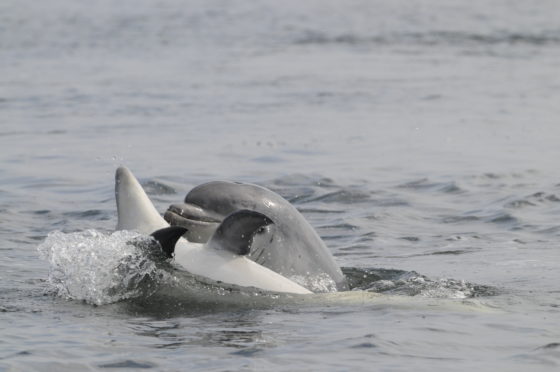Calls have been made for people to show more respect to marine wildlife in and around the Moray Firth, despite the number of incidents of disturbances to cetaceans decreasing in the past year.
In recent years, incidents have been reported to police and marine life conservation bodies regarding private boat operators getting too close to pods of pilot whales near to the Kessock Bridge, causing unnecessary fear, and sometimes harm, to the wildlife.
The number of reported disturbances has decreased in the past year following a successful venture between Police Scotland and partner agencies, which included the launch of a poster campaign to raise awareness.
Wildlife crime liaison officer, constable Daniel Sutherland, said: “I am pleased that there has been a reduction in the number of reported incidents of cetacean disturbance in the last year but it is important that we continue to raise awareness of the issue to help prevent criminal incidents occurring.
“There is generally an increase in the number of marine craft operating around Scotland’s coast during the summer months and this naturally leads to an increase in the likelihood of an encounter with a cetacean.”
“I understand that people want the best possible sightings, sometimes for a good photo and often simply for the experience of being close to these amazing creatures, and I do not want to discourage this but I want to make sure people do so responsibly with respect for the wildlife.
“We strongly recommend that anyone watching marine wildlife keeps their distance and follow the Scottish Marine Wildlife Watching Code.”
The code outlines the safest way for enthusiasts to capture a glimpse of the majestic wildlife, by sticking to set rules and procedures to prevent unnecessary torment, with those who disobey the code potentially facing criminal charges.
Hotspots across the north for spotters include the famed Chanonry Point near Fortrose, where tourists and wildlife enthusiasts flock in their scores.
Alice Walters, Whale and Dolphin Conservation policy officer, said: “Our key aim is to stop disturbance before it happens by raising awareness of the issues.
“Significant human disturbance, or harassment, is illegal and can drive dolphins from the places that are important for them.
“Everyone is excited to encounter whales and dolphins.
“Social media interest, particularly around unusual sightings such as orca, humpbacks and the Thames beluga nicknamed ‘Benny’, can draw crowds of people, all hoping to get a close view.
“They can be unaware of how to behave around them, so most disturbance is unintentional. A good encounter is one that is enjoyable for you and the whales or dolphins.”
